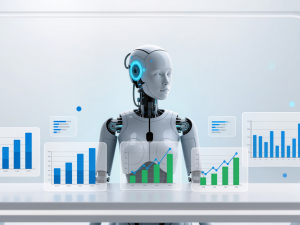From Lecture Halls to Green Labs
A decade ago, “green jobs” sounded like a niche career path, something reserved for environmental scientists or activists. Fast forward to 2025, and the picture is completely different. The climate crisis has moved from the sidelines into the center of global discourse, forcing governments, industries, and universities to rethink how they operate.
Nowhere is this shift more visible than in higher education. Colleges are racing to develop green degrees in higher education that prepare students not only to understand climate change but also to tackle it head-on. From sustainable finance to renewable engineering, students are training for jobs that literally didn’t exist ten years ago.
The result? College curricula are being rewritten in real time, and climate change is no longer just a unit in an environmental science course, it’s becoming the backbone of entire degree programs.
Why Green Degrees Are Gaining Ground?
So, why are universities across the globe suddenly prioritizing sustainability in their academic offerings? The answer lies at the intersection of market demand, societal urgency, and student activism.
1. The Green Job Market Is Exploding
According to the International Labor Organization, the transition to a green economy could create 100 million new jobs globally by 2030. Careers in renewable energy, sustainable agriculture, carbon accounting, and green infrastructure are no longer fringe, they’re mainstream. Colleges are adapting quickly to ensure graduates are employable in this booming sector.
2. Societal Needs Are Driving Curriculum Change
The climate crisis isn’t abstract. It impacts agriculture, housing, migration, and even public health. Universities are recognizing their responsibility to equip students with the skills to design sustainable solutions, whether that’s building carbon-neutral cities or crafting climate-resilient business models.
3. Students Are Demanding Change
Today’s students particularly Gen Z aren’t satisfied with climate education as an elective. They want systemic change. Student unions worldwide have petitioned for climate literacy to be a core component of all degree programs, pushing universities to expand offerings.
4. Global Mandates and Partnerships
International frameworks like UNESCO’s Greening Education Partnership are urging institutions to embed climate action into curricula. These initiatives aren’t just symbolic; they provide resources, teacher training, and guidance that accelerate systemic change in education.
How Climate Change Is Rewriting Curriculum
The shift isn’t limited to introducing a few new environmental majors. Colleges are weaving climate literacy into the very DNA of their academic models.
1. New Degree Programs Are Emerging
From undergraduate majors in Sustainability Studies to master’s programs in Climate Policy and Finance, universities are rolling out degree tracks tailored to the green economy. For example:
- Arizona State University offers a BA in Sustainability that integrates social sciences, economics, and policy.
- The University of Exeter in the UK has pioneered programs in Climate Science and Risk Management.
- Technical institutions are adding programs in renewable energy engineering, green architecture, and sustainable supply chain management.
2. Interdisciplinary Integration
Climate change doesn’t fit neatly into one department. Colleges are embedding sustainability into existing programs:
- Business schools are teaching sustainable finance and ESG (Environmental, Social, Governance) reporting.
- Architecture departments focus on green design and carbon-neutral construction.
- Computer science courses explore AI tools for energy optimization and climate data modeling.
3. Hands-On Learning Becomes Essential
Green degrees aren’t just about theory. Universities are adopting problem-based learning approaches:
- Students design renewable microgrids for local communities.
- Campus farms double as living labs for sustainable agriculture.
- Partnerships with local governments provide real-world climate adaptation projects.
4. Indigenous and Local Knowledge
Many programs now incorporate indigenous and cultural perspectives on sustainability. This acknowledges that solutions don’t come only from labs but also from centuries-old practices of ecological stewardship.
5. Certifications and Micro-Credentials
Beyond full degrees, colleges are offering shorter credentials like certificates in carbon accounting or circular economy strategies, giving students flexible entry points into the green workforce.
Case Studies: Universities Leading the Way
1. University of California System (USA)
The UC system pledged carbon neutrality by 2025, integrating climate goals into academics and operations. Students can major in fields like environmental data science while conducting hands-on research in renewable energy labs.
2. TERI School of Advanced Studies (India)
TERI University has specialized programs in climate science, renewable energy, and sustainability management, directly addressing the needs of a rapidly developing economy facing climate pressures.
3. National University of Singapore (NUS)
NUS integrates sustainability across curricula, from engineering to business, and collaborates with government and industry on climate solutions. Their “Sustainability & Climate Change” minor attracts students across faculties.
The Impact on Students and Career Paths
The rise of green degrees in higher education is reshaping not just how students learn, but how they envision their futures.
- New Career Opportunities: Fields like carbon trading, renewable energy engineering, and sustainable supply chain management are now legitimate career options.
- Skill Diversity: Students graduate with technical knowledge (solar grid design) and soft skills (negotiating climate policy).
- Global Employability: Because climate change is universal, graduates with green credentials have opportunities worldwide.
And importantly, this trend is reframing success—not just in terms of salary, but in terms of contributing to global solutions.
Challenges in Implementing Green Curriculum
It’s not all smooth sailing. Universities face hurdles as they expand sustainability education:
- Faculty Training: Many professors trained in traditional disciplines need new expertise to teach climate-related courses.
- Resource Allocation: Lab equipment, field projects, and interdisciplinary programs require significant investment.
- Balancing Breadth and Depth: How do you prepare students for specialized green jobs while still giving them broad, transferable skills?
- Equity in Access: Students in developing regions may lack access to cutting-edge programs, potentially widening the global skills gap.
Looking Ahead: The Future of Green Education
By 2035, green curricula may be as standard as general education requirements. Expect to see:
- Mandatory Climate Literacy Courses for all majors, from art to engineering.
- University-Industry Pipelines linking students directly with green startups and renewable firms.
- Global Accreditation Standards for sustainability-focused degrees.
- More Hybrid Learning Models, where students earn credentials across online and in-person platforms to stay nimble in a fast-changing green economy.
The shift signals a broader truth: higher education isn’t just about preparing students for jobs—it’s about preparing them to confront the biggest challenge of their generation.
Conclusion: Education for a Warming World
Climate change is no longer a future problem—it’s a present reality. As a result, green degrees in higher education are moving from optional to essential. Colleges are rewriting curricula not just to keep up with market demands, but to lead the charge toward a more sustainable society.
For students, this means opportunity: the chance to build careers in fields that matter, innovate solutions the world desperately needs, and graduate with skills that future generations will depend on.
The classroom of tomorrow won’t just be about textbooks, it’ll be about solving the planet’s toughest challenges. And the rise of green degrees ensures students are ready.






